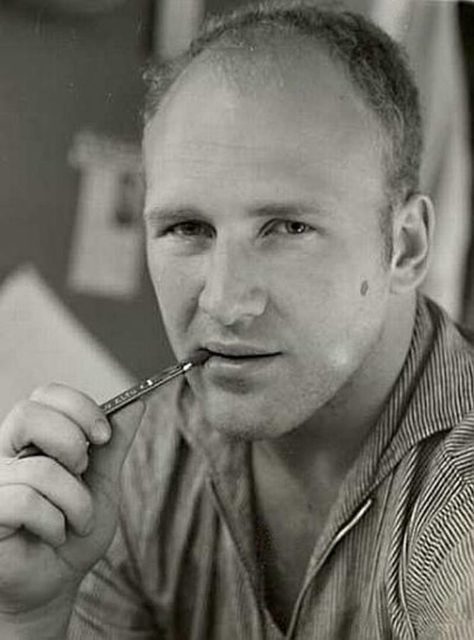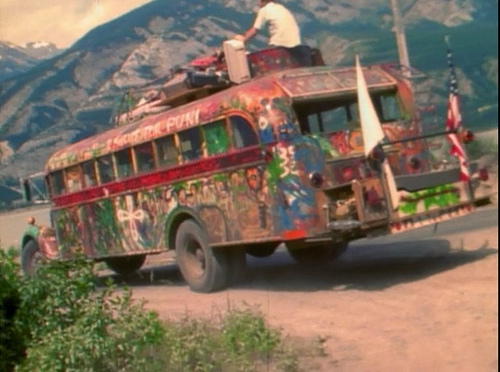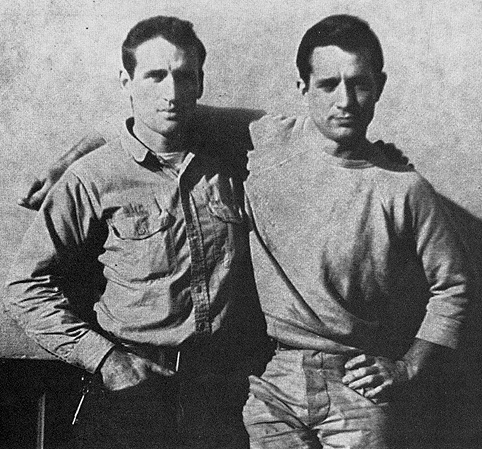The “last note” the eccentric novelist ever wrote was”Ocean, Ocean I’ll beat you in the end.” While this may be the tip of the iceberg for Ken Kesey, it’s still a worthy mention from his many psychedelic escapades and misadventures.
He was born in 1935, in La Junta, Colorado. After proving himself a solid student, he volunteered to an army experiment with new mind-altering drugs. He also worked with patients at a hospital and the experience with the patients there would later be used as plot material of his famed novel. He died from liver complications in Eugene, Oregon in 2001.

Ken Kesey was famous for forming a small yet highly influential counterculture community which took bus trips across states during the 1960s. Amusingly dubbed The Merry Pranksters, they threw various parties, gave out LSD to passersby, and documented the journeys in many books. To nobody’s surprise, the famous psychedelic rock band, The Grateful Dead were also members of the commune and were known as The Warlocks.
The psychedelic shenanigans of the group are nowhere near famous and crucial as Kesey’s novel One Flew Over the Cuckoo’s Nest. It stands as literary beacon of rebellion and nonconformity against the dehumanizing social norms and regulations during that time.
It is an acclaimed cinematic example of a flawless movie adaptation, even though Kesey hated the script of the movie. While he stands remembered for the famous novel, he is also regarded as a giant figure among the many in the psychedelic 60s.

It would be an understatement to say that Kesey was fond of psychedelic drugs, as most of his books were written while under the effects of LSD. His other critically acclaimed book Sometimes a Great Notion was also adapted into a film (starring Henry Fonda) and focused on human individuality and the self. Kesey along with the Merry Pranksters advocated responsible use of the mind-altering drugs and they would often clash with the authorities.
In 1965, Kesey was arrested for marijuana possession and consequently he tried to avoid the police by faking suicide. The media bought the alleged story, but the authorities didn’t believe it.
With a little help from his friends, he placed his vehicle on a cliffside road near Eureka with a note that poetically “bid his farewell”, as he sought refuge in Mexico in the back of a friend’s car. After months of stealthy FBI avoidances, he was finally caught and quickly sent to jail for five months in Redwood City, California, eight months after seeking refuge in Mexico.
After the media fiasco, he was released and he returned to his family farm in Pleasant Hill, Oregon. It was at this point that the adventurous writer began settling down. He lived there for the rest of his life, writing many essays, books, and articles that reflected on his adventurous tales.

Undoubtedly, Ken Kesey took part in the forming of the great hippie counterculture, advocating social humanism and propagating spirituality in his own way.
Read another story from us: Ken Kesey had the most magical bus in the world- The Further
His cult novels, the bus trips, and the countless LSD trips certainly have spiced up his writing style and recognition. They might have even served as an inspiration to Gonzo journalism. Whatever the “ocean” might have been, Kesey certainly proved himself victorious.
